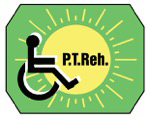


|
Current issue
Archive
Manuscripts accepted
About the journal
Editorial board
Reviewers
Abstracting and indexing
Contact
Instructions for authors
Publication charge
Ethical standards and procedures
Editorial System
Submit your Manuscript
|
abstract:
Original article
A preliminary study on the employment of inertial sensors for wheelchair basketball classification: an investigation into sensor positioning
Karina Santos Guedes de Sá
1
,
José Irineu Gorla
1
,
Marília Passos Magno e Silva
2
,
Givago da Silva Souza
3
,
Anselmo de Athayde Costa e Silva
2
Advances in Rehabilitation
Online publish date: 2025/06/10
View
full text
Get citation
ENW EndNote
BIB JabRef, Mendeley
RIS Papers, Reference Manager, RefWorks, Zotero
AMA
APA
Chicago
Harvard
MLA
Vancouver
Introduction
The use of inertial sensors has been explored to evaluate wheelchair basketball athletes and support classification processes. However, prior studies have primarily positioned sensors on wheelchairs, overlooking trunk and wrist placements, key areas for classification. This study investigates the optimal placement of sensors on players' bodies and wheelchair frames. Material and methods Three inertial sensors were positioned on the trunk, right wrist, and rear region of the wheelchair for ten athletes from different sports classes. Athletes completed the 20-meter speed test and the Illinois agility test. Data on acceleration, speed, skewness, kurtosis, and RMS across three axes (x, y, z) were analyzed for correlations with functional classes. Results The 20-meter speed test revealed three accelerometer and one gyroscope variable with significant correlations in the anteroposterior axis. The Illinois agility test showed more significant variables (n = 12) than the 20-meter speed test (n = 6), including accelerometer data (e.g., linear acceleration, r = -0.86, p < 0.01) and gyroscope data (e.g., angular velocity, r = -0.77, p < 0.01). Sensors on the wheelchair showed the strongest correlations (n = 8), followed by the wrist (n = 6) and trunk (n = 4). The anteroposterior axis presented the most correlations (n = 12). Conclusions The findings underscore the importance of sensor placement, test type, and movement axis in athlete classification. Based on these analyses, the wheelchair appears to be the most suitable location for IMU sensors, providing valuable data to distinguish movement patterns between low- and high-class athletes in the classification process. keywords:
Performance, Paralympic athletes, Accelerometer, Gyroscope, Evidence-based classification |
    |